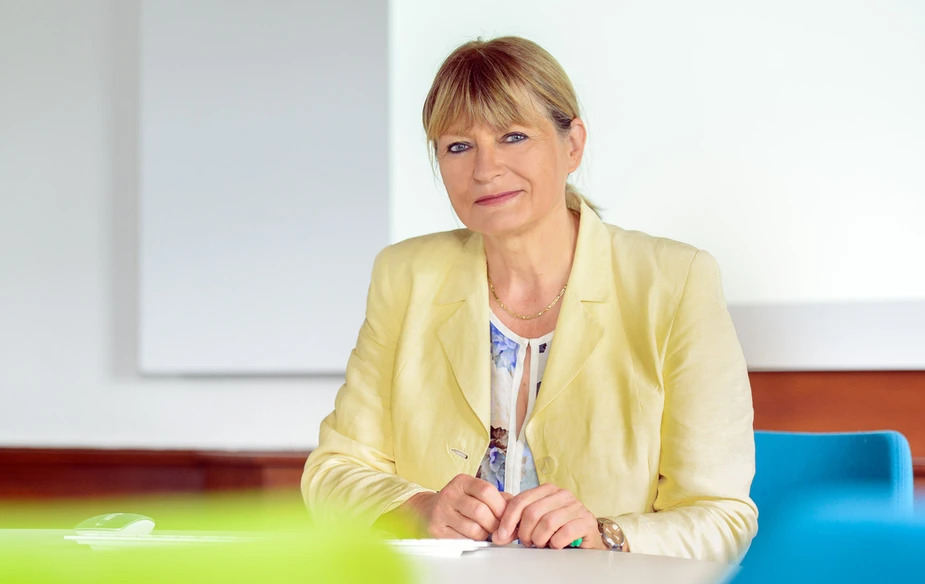Serious research, light presentation: Why media training is so important
The applicants for Adlershof’s Dissertation Award receive professional coaching
Three newly graduated PhD students competed for the Adlershof Dissertation Award at the Erwin Schrödinger Centre of Humboldt-Universität zu Berlin (HU). They had only 15 minutes for each presentation, followed by a Q&A, before the jury named a winner. This February the award went to Hanna Drimalla, who is the third woman scientist to receive the 3,000-euro award since 2002.
Her dissertation, which she wrote at the HU’s department of psychology, looked at a certain type of ‘mimicry’ that involved automatic or subconscious imitation of the facial expressions of other people. Using computer-based methods, the psychologist was able to show that mimicry reflects the way we identify emotions and express empathy. She focused on the changes in the mimicry of people with autism that could result in new possibilities for diagnosis and interventions. The two runners up for the Dissertation Award looked at characterisation using spectroscopic isotope analysis, and displacement processes on Berlin’s housing market, respectively.
The competition requires presenting complex issues in a brief, accessible, and, where possible, also entertaining way. Many ‘science slam’ events work with even more brief periods of, say, three minutes and the audience’s applause determines the winner. At the ‘Battle the Horst’ science slam, an event hosted by WISTA Management GmbH four time a year in addition to the competition at the ‘Long Night of the Sciences’, presentations may last no more than 10 minutes.
Presenting serious research in this way without it becoming arbitrary or even banal is challenging. Adlershof’s own Agentur Acksteiner offers professional coaching to prevent this. ‘I’ve been coaching the Dissertation Award finalists now for five years,’ says Sylvia Acksteiner, a seasoned journalist and a TV and radio host. While the audience at these events is generally interested in science, they are not necessarily familiar with specific research areas. A dissertation’s key points must be explained, albeit in an accessible way. ‘It is not simply about what you say, it’s also about how,’ she says.
The framework of every presentation should consist of an engaging structure and simple sentences. Enunciation, a strong voice, and body language must be up to scratch and presenters should always face the audience. Powerpoint slides can function as the backbone of a presentation. However, at academic conferences, they are often too numerous and presented too quickly. ‘We work on making slides better understandable and use notes,’ says Acksteiner. It was important to speak without notes when welcoming people and to create emotions.
With one session in groups of three and one solo, the two-event training is obviously effective. ‘The presentations have really improved through the coaching,’ the trainer says. Now, who wins comes down to nuances.
Nuances that this this year’s winner was clearly able to communicate well. Having held a three-minute presentation at the ‘Future Medicine Science Match’, maybe it was her prior experience that tipped the scales in her favour. Be that as it may, says Drimalla, the coaching sessions and the personal feedback from Adlershof prompted her to ‘radically redesign the presentation’. It was important to ‘create a common thread, to cut things out, and express things differently’. Despite prior training, she felt slightly uneasy before the presentation but ‘once the audience started asking questions, it was totally fun.’
Whenever it isn’t possible to host large events, like during the recent coronavirus crisis, working-from-home and working remotely are the names of the game. Sylvia Acksteiner is quite used to doing this, using video and phone conferencing, and communicating through Skype or WhatsApp. Whenever possible, however, she prefers to be in personal contact with people. Drimalla, who is now a post-doc at the Hasso Plattner Institute in Potsdam, also prefers working at the office. Working in her own home made it harder for her to organise her workday. Only some things had been easier at home, she says, like writing papers.
By Paul Janositz for Adlershof Journal
